Like Our Facebook Page For Latest News
Dubai: When it comes to long-time residents of the UAE, any number of expats would lay claim to being early settlers here. More often than not, their chronicling would date back to 40-50 years, good enough for them to be acknowledged as veterans. But away from the spotlight, one Dubai-based Indian family is silently marking a milestone on completing a momentous 100 years in the UAE.
As family members of Uttamchand Tulsidas Bhatia, deemed the wealthiest and most influential Indian merchant of his times, share their journey exclusively with Gulf News, the history is eventful, the recollections vivid.
The illustrious Bhatias, spanning four generations now, make for a riveting story – whether it’s their personal accounts of how an orphaned Uttamchand sailed into Dubai as an 11-year-old and became the closest confidante of His Highness Sheikh Rashid bin Saeed Al Maktoum, the late Ruler of Dubai; or their explicit narrative on Dubai’s transformation through the vagaries of time.
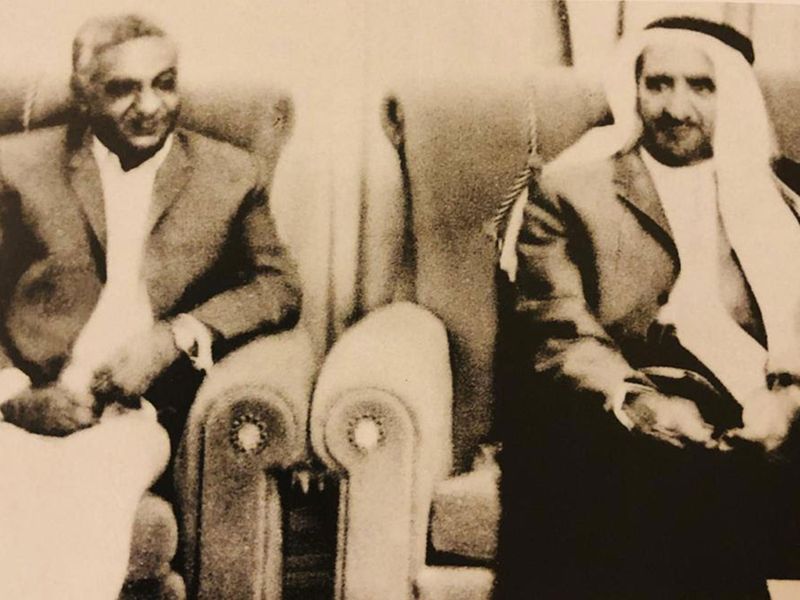
Image Credit: Bhatia family
Below is the first segment of a two-part report on the 100-year-old Bhatia clan and their intriguingly christened family business – Uncle’s Shop – in Dubai.
Throwback to the Thattais
Uttamchand Bhatia’s destiny in Dubai was pre-ordained in many ways. It was at the turn of the 18th century that his Thattai forefathers first arrived in Sharjah on launches, having migrated from the deserts of Jaisalmer in India’s Rajasthan to Karachi and Nagar Thatta in Sindh, now a part of Pakistan.
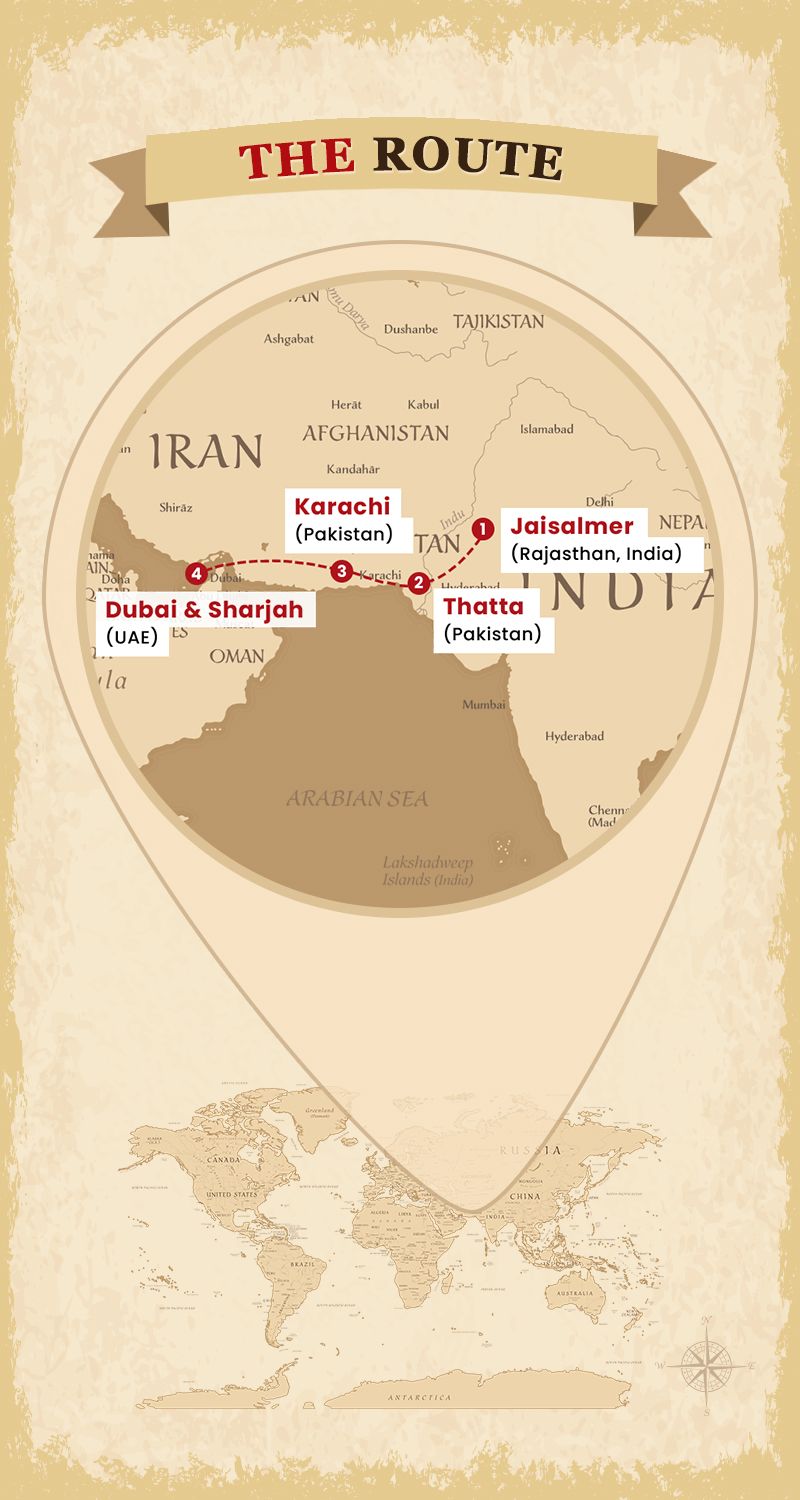
Image Credit: Vijith Pullikal/Gulf News
Uttamchand’s grandson Deepak Bhatia, who has painstakingly retraced his family’s roots, talks of how the Bhatias owe their name to an erstwhile ruling tribe – the Bhatis – in Jaisalmer. They moved to Thatta as it was a thriving business hub.
“Long before Karachi had its first port, Nagar Thatta had a small coastal port where the Arabs traditionally used to drop their anchors to exchange their cargo of dates and pearls for supplies of grains, pulses and cloth,” he says. “A noted historian once called Thatta the London of the times. Home to over 5,000 spindles, its cotton textiles were exported to Europe where they were highly sought after among the elite. The Arabs referred to Thatta as Dewal Bandar because of a temple (Dewal) on the banks of the Indus river. They invited the Thattai Bhatias to come to the Gulf.”

Image Credit: Ahmed Ramazan/Gulf News
Initially, it was only the male members of the Thattais who undertook the voyage, leaving their families behind in Thatta.
“Adapting to the harsh desert climes of the Gulf where there was no power and hardly any water was not easy. But the Thattais were a hardy and enterprising lot. They dug their own wells, learnt Arabic and worked their way around. Soon, they made the Arabian Gulf their second home,” notes Deepak.
The Mercentile Hindu Community of Thatta, as they grouped themselves, were called Baaniyaan locally. They were well-respected for their simple living and sharp business acumen.
Orphan boy, 11, arrives in Dubai
The strong foundation laid by the Thattai Bhatias in the Gulf paved the way for their descendants to build on the traditional lines of trade.

Image Credit: Bhatia family
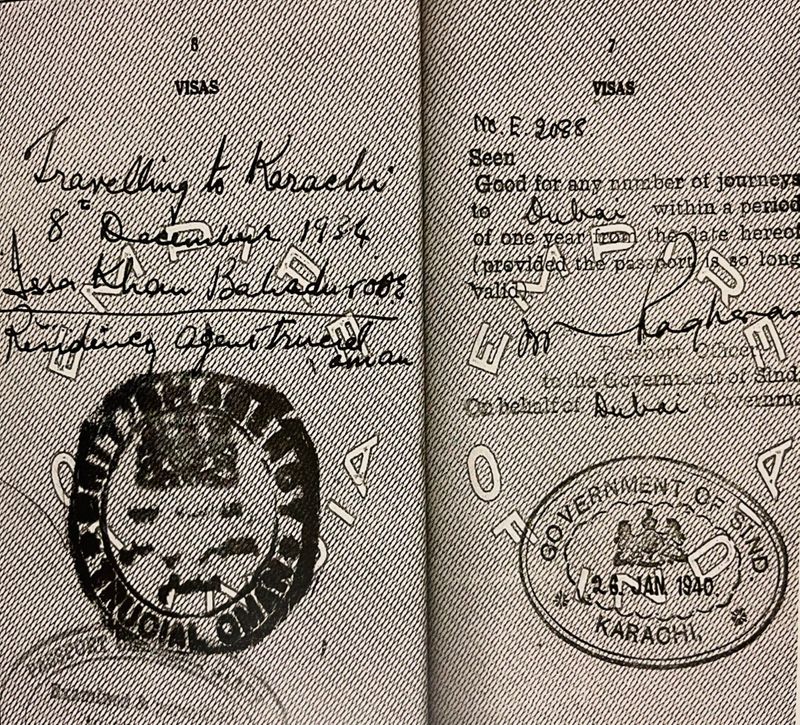
Image Credit: Bhatia family

Image Credit: Bhatia family
When one such descendant, Lalchand Dhosani, arrived in Dubai in February 1920, he brought Uttamchand, then a boy of just 11, along with him.
The voyage was undertaken amid tragic circumstances.
Recalls Deepak: “My grandfather’s family had been virtually wiped out by the Plague in 1920. He had lost his mother at birth and his father had died when he was three. He was living with his father’s five brothers, all of whom died in the Plague. Even his aunts, barring one, did not survive. With no one to take care of my grandfather, Dhosani, a cloth trader and son-in-law of the only surviving aunt tagged him along to ‘Dabai’, as Dubai was known in those days.”
Deepak says the seven-eight-day voyage from Karachi to Dubai was the first memorable event of his grandfather’s life. “That was the first time he visited Karachi and sailed on a steamer. He barely knew where and why he was being taken and though he was scared when the ship rocked on the high seas, the novel experience excited him ’’ he remembers his grandfather telling him.
But young Uttamchand’s initial days in the new land turned out to be a nightmare.
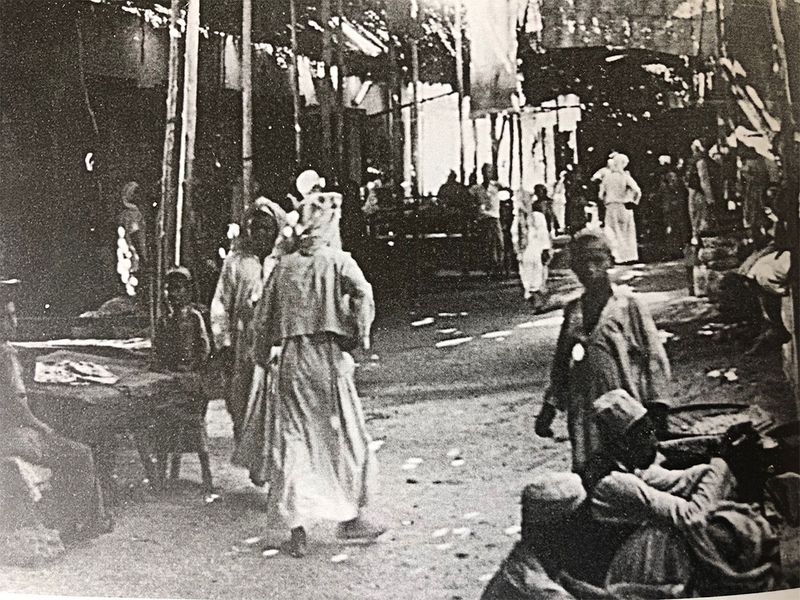
Image Credit: Pearls of Dubai (DTCM)
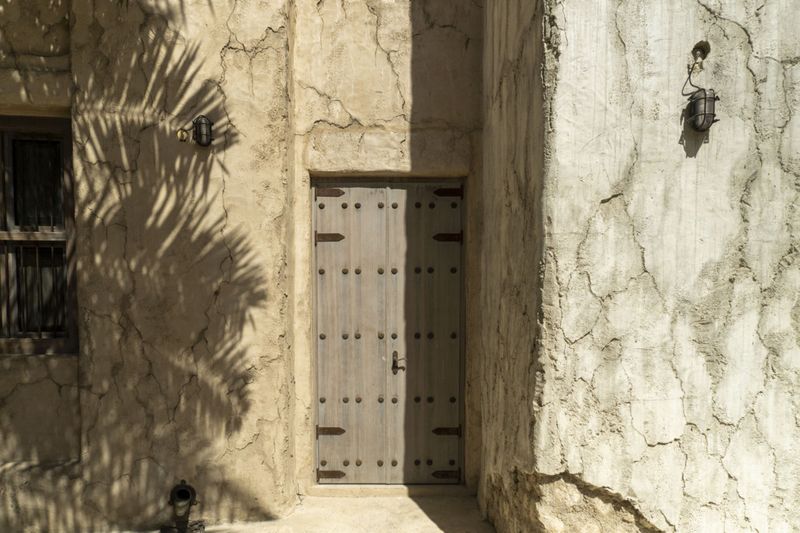
Image Credit: Bhatia family
Deepak says, “My grandfather was abused and made to do a lot of work at Dhosani’s shop. He was asked to carry heavy consignments on his back and made to sleep on hard rolls of cloth. He was beaten up and barely given any food.”
Turning point in Uttamchand’s life
Luck, however, was on Uttamchand’s side. “The maids of the royalty who would visit the souq noticed him as he was the only boy amongst the adults. They would utilise his services to carry their purchases to the palace. Somewhere along the line, they discovered his miserable plight and brought it to the attention of the Ruling family,” narrates Deepak.
He says the boy was summoned to the palace, then located in Shindagha. “HH Sheikha Hessa bint Al Murr, wife of the then Ruler of Dubai HH Sheikh Saeed bin Maktoum Al Maktoum, asked to see him and enquired about his condition. My grandfather said he had nothing on him as his uncle never paid him. That’s when Sheikha Hessa encouraged him to work on his own and offered to help him. He was also asked to learn Arabic which he did in right earnest.”
The chance audience that Uttamchand got with Sheikha Hessa was the turning point in his life, says Deepak.
“He was introduced to His Highness Sheikh Rashid, who was around the same age. Soon, His Highness and my grandfather became the thickest of friends. While the Royals and locals called him Vattra, as nicknamed by His Highness, the Indian community referred to him as Uttra bha,” says Deepak.

Image Credit: Ahmed Ramazan/Gulf News
A brilliant future beckons
Although Uttamchand travelled to India after a year in Dubai, he came back in 1922 to embrace a future from which there was no looking back.
Mature beyond his years, he showed great promise in doing business and by the time he was 15, he was asked to run a textile shop. By now, he was also fluent in Arabic and could communicate at ease, both with the Royals and fellow merchants.
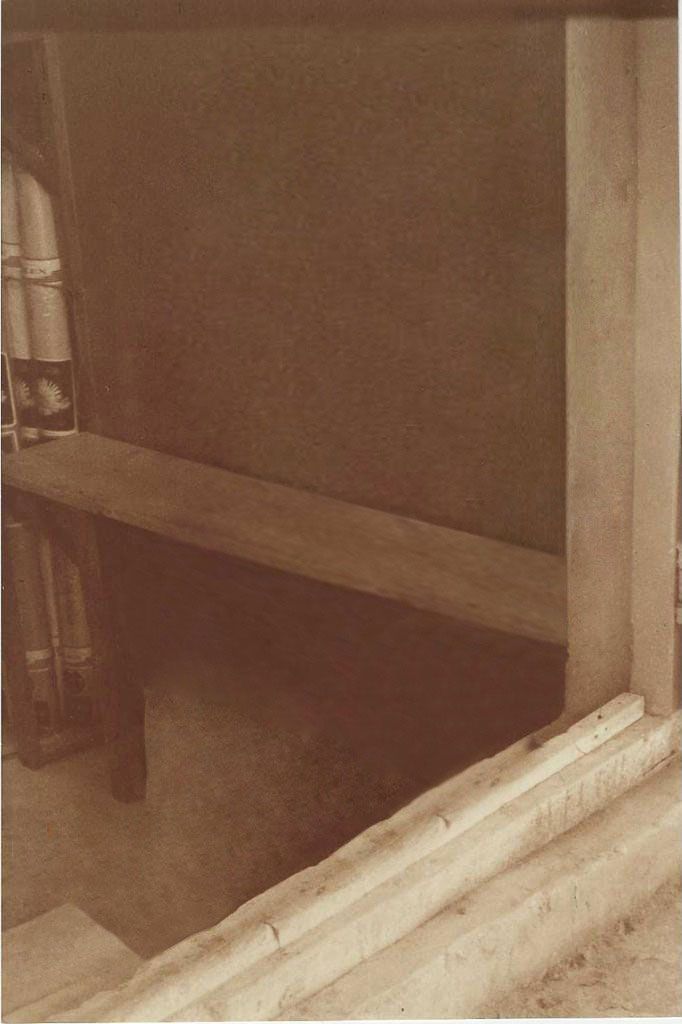
Image Credit: Bhatia family
In 1926, Vattra opened another textile shop in Souk Al Baaniyaan or the Textile Souq in Bur Dubai. The shop, which became a veritable landmark, was called Uncle’s Shop, after Sheikh Rashid, whom Vattra’s children referred to as ‘Uncle Sheikh Rashid’. The flagship of the family’s business continues to carry the name till date.
Over the next few years, Uttamchand made a distinct mark for himself not only as an adept trader in textiles and later pearls and foodstuffs, but also as an active community leader, always ready to help anyone in need.
By the time he turned 24, he got married to my grandmother Savitri Devi in native Thatta.
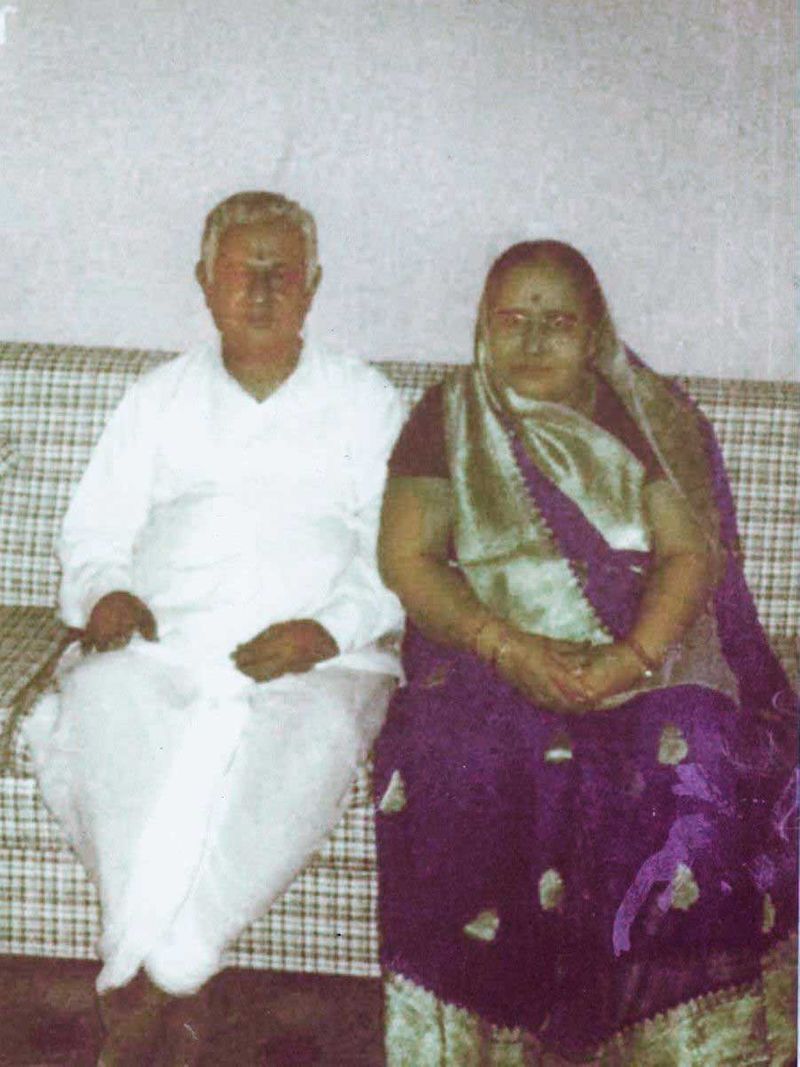
Image Credit: Bhatia family
“She was perhaps the third or fourth Indian woman to arrive in Dubai – Indian expat Kanthard Nagji Soni was the first. In fact, Savitri Devi was the first to touch down on a sea plane that landed on an artificial island near the Maktoum Bridge in March 1944. She had the honour of being collected by a special boat, while her luggage was brought separately on another boat. She was also privileged to have her first meal in the palace,” says Deepak, quoting from his family’s rich repertoire of anecdotes.
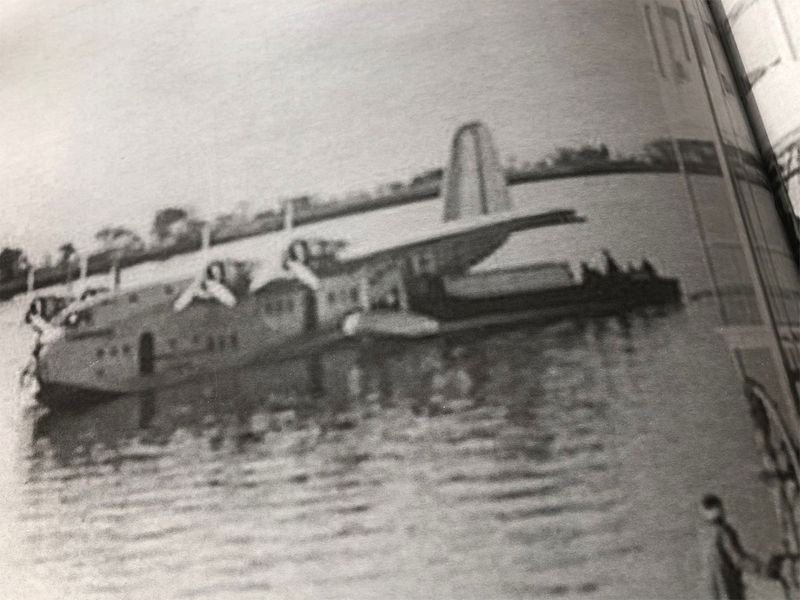
Image Credit: Bhatia family
By this time, Vattra was acknowledged as a wealthy pearl merchant and financer, which had earned the title of Banyaan Lulu.
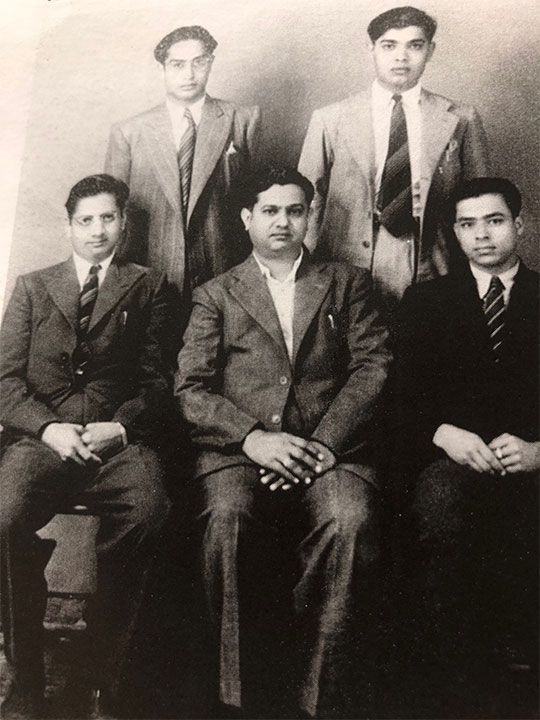
Image Credit: Bhatia family
There is also a jotting by Uttamchand himself which lets on that a tola of gold cost Rs20 – Indian rupee being the currency of the day – when he bought gold for his newly-wed wife 10 years earlier – in 1934.
A full month’s meal for Rs5 in Dubai
Uttamchand’s notes provide a precious insight into the cost of living in Dubai in the early days. He talks of how four months of work – from May to September, which was the typical pearling season – was enough to earn a year’s living. “Interestingly, the men folk who would leave their families behind would work here during the hottest months and rush to their home country during winter,” says Deepak.
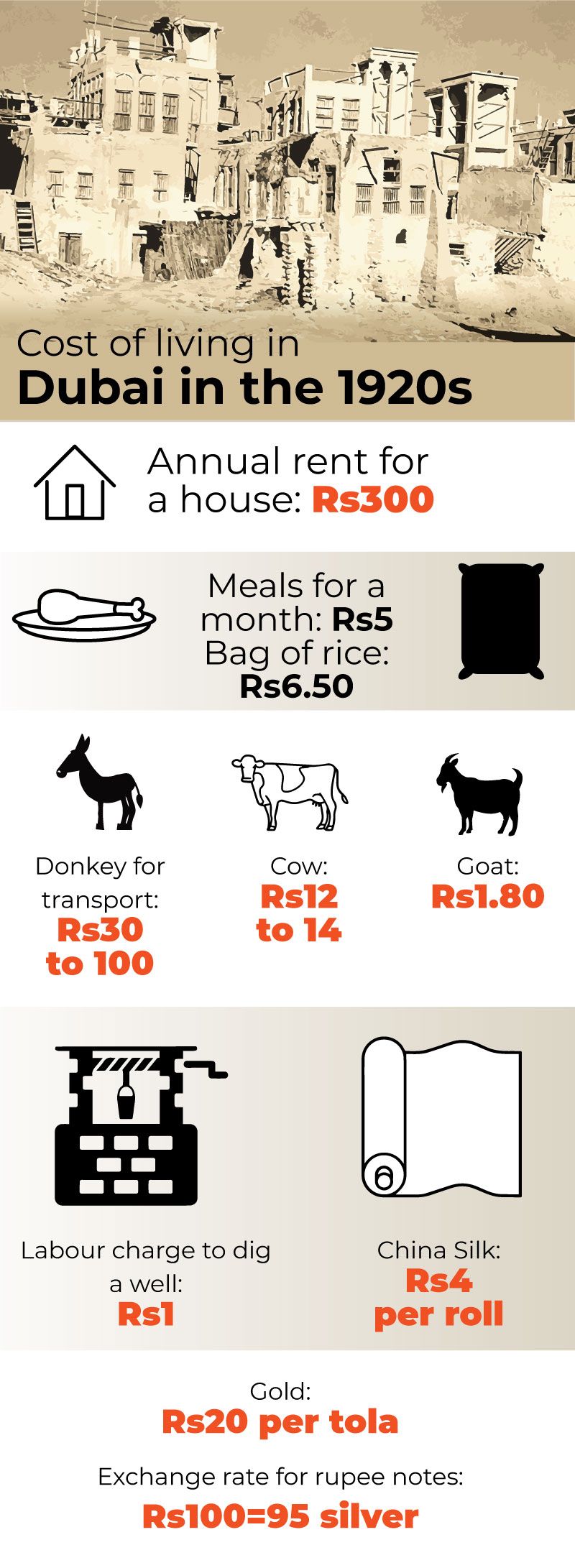
Image Credit: Seyyed Llata/Gulf News
The excerpts reveal that annual house rent was around Rs300 and one could eat enough for month for Rs5. The staple food was Arabic bread, freshly baked in coal-fired ovens and rice, a bag of which cost Rs6.50. Onions and garlic were imported from Kuchh on steamers that would take 15 days to reach Dubai. Wheat was imported from Busher in Iran and there were hardly any vegetables available at the time.
Water, which was stored in big Persian pots, was brackish and had to be strained before drinking. The cost of labour to get a well dug for drinking water was Re1.
“Back then, there was no power and hardly any drinking water. So merchants would get wells dug for Re1 and the supply would last them for a month and when the well would dry up, they would get another dug” says Deepak.

Image Credit: Bhatia family
River water was also imported from Basra in Iraq in four gallon kerosene containers transported on launches.
“There was no power, and kerosene lanterns were commonly used. It was only in 1950 that the first generator, a dynamo actually, was installed at Sheikh Saeed’s palace in Shindagah,” he says, adding that an ice-maker was also a novelty, which his grandfather had privileged access to.
Only the rich rode donkeys
Uttamchand’s jottings also reveal how the rich rode donkeys – it was a status symbol — in those days.
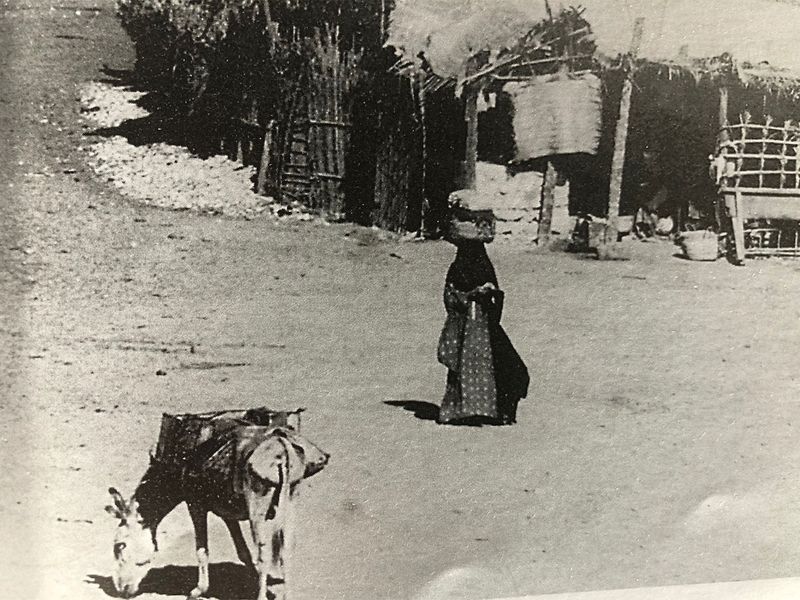
Image Credit: Bhatia family
“Cars were unheard of – the first car, a Land Rover, arrived in the palace only in 1945. Donkeys were used for commuting. But not everyone could afford them as they were specially imported from Iraq at Rs30 to Rs100 per animal,” says Deepak.
To get an idea of how that compared with other prices, a goat cost just Rs1.80. Cows were bought from Iran and Indian merchants would pay Rs12-14 to save a cow from a slaughterhouse and then send the animal by ship to India.
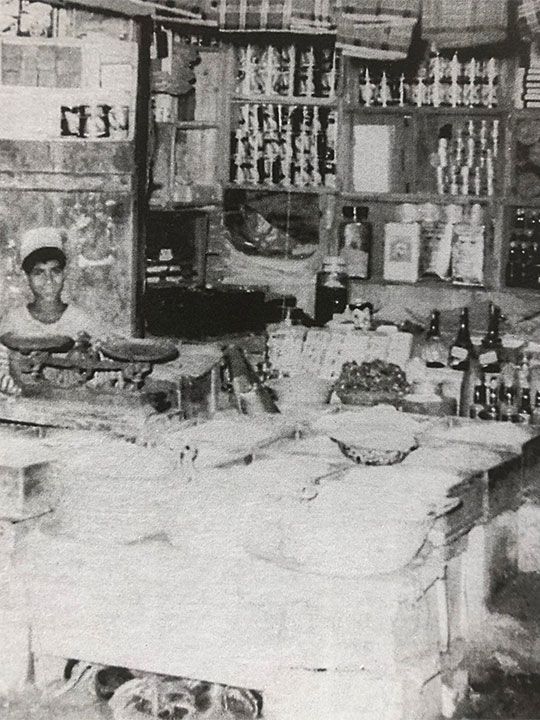
Image Credit: Bhatia family
As status symbols went, wearing gold jewellery was considered a privilege even then. “It was a symbol of how rich you were. The royal maids made it a point to dress well and adorn jewellery as a sign of their employers’ standing,” says Deepak.
Date syrup laddus and ‘Thakan Chonga’ tea
Uttamchand’s shop was located in the bustling Souk Al Baniyaan, now called Souk Al Kabeer or Textile Souk in Bur Dubai. Earlier, it had six-eight gates of entry.
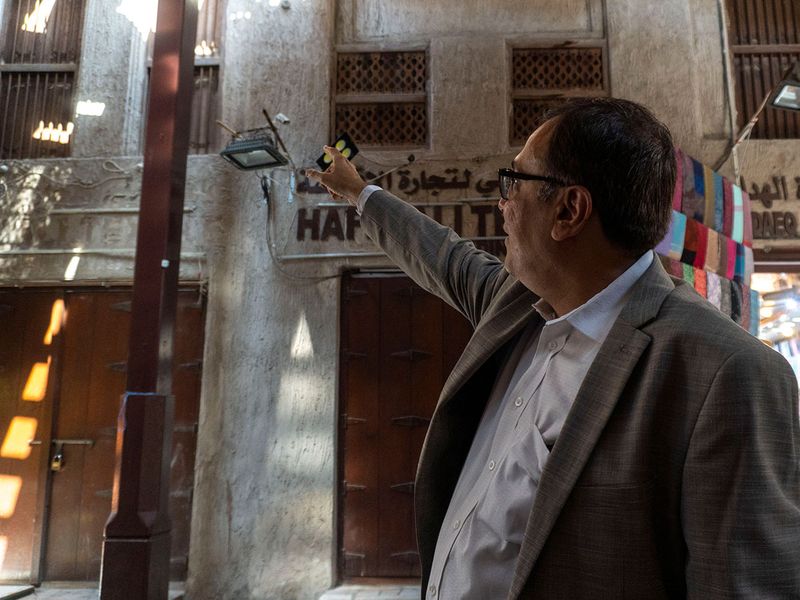
Image Credit: Ahmed Ramzan/Gulf News
The shops, each set apart by only a distance of four feet, were located on the ground floor while the merchants, including Uttamchand, resided on the Gurfa on top. The trademark wind tower or Baadgir provided much-needed cooling during the hot summers, says Deepak.
“Later, my grandparents moved to a house in Shindagah, which was purchased by my grandfather in the 1940s. It was located close to the palace. My grandmother would talk of a big plate that would be placed on a window sill of her mud house. Thanks to the Royals, the plate would get filled with different kinds of dates which were soaked for 10-12 days to generate date syrup. The syrup would then be used for making traditional Indian sweets like laddus and badam halwa which the royalty relished too,” claims Deepak.

Image Credit: Ahmed Ramzan/Gulf News
Date delicacies apart, tea from a tea stall next to the British military camp was also very popular at the time. “It was a must-have for my grandparents when they would visit Sharjah. The tea stall was run by an Indian called Thakan Chonga.”
A special bonding with Sheikh Rashid
Pearls of Dubai, a book brought out by the Bhatia family to throw light on Indo-Arab relations in the UAE between 1900 and 1958, has many delightful recollections that reflect the special bonding that Vattra shared with Sheikh Rashid.

Image Credit: Pearls of Dubai (DTCM)
Deepak’s late father Vijay Bhatia, who was the third of Uttamchand and Savitri Devi’s seven children, writes in the book: “Our shop was almost like a majlis. The Ruler’s Office was nearby so it was a stopover for all officials and diplomats who took a break there before meeting Sheikh Rashid. Indians who needed his assistance knew this and came only in the evening. If my father did not attend the Majlis for eight-10 days, Sheikh Rashid would send a messenger to find out why. He always made my father sit beside him at the majlis. My father had several privileges but never wanted to take advantage of them. He felt it would ruin a wonderful friendship.”

Image Credit: Bhatia family
Deepak also talks about Thani Bin Abdullah, the first Speaker of the Supreme Council, as a close and common friend of his grandfather and HH Sheikh Rashid. “My grandfather had very fond memories of their times together,” he says.
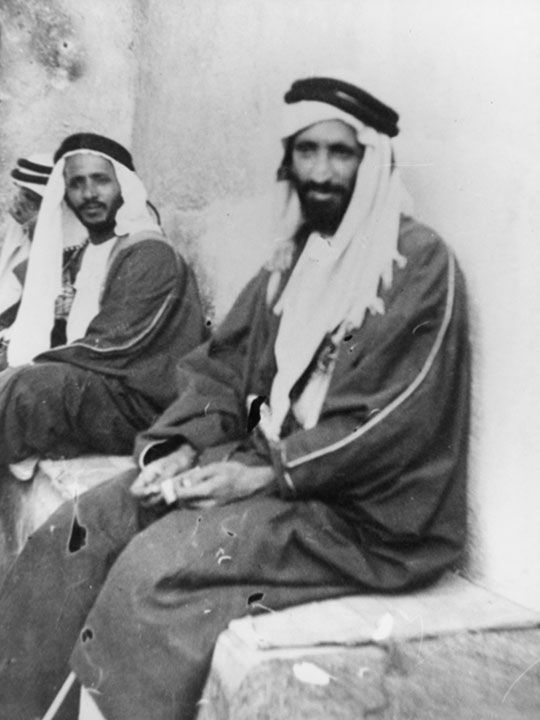
Image Credit: Pearls of Dubai (DTCM)
In his handwritten notes, Vattra mentions his invitations to several royal weddings, where he says it was “a delight to see Sheikh Rashid do the traditional dance. Knowing that we Indians were strictly vegetarian, special food was served to us which included dates, fruits, dried fruits and camel’s milk in aluminium vessels.”
He also writes, “Sheikh Rashid would come to my house sometimes and together, we would have meals cooked by me and my wife. He was very fond of moong dal, rice, sheera and yoghurt.”
Deepak, who would accompany his father and grandfather on some of these trips to the palace, recalls, “Sheikh Rashid once asked my grandfather in a brotherly fashion why he had not switched to wearing suits from dhotis like many other Baniyas. My grandfather promptly replied that he would do it only if he would also wear a suit.”
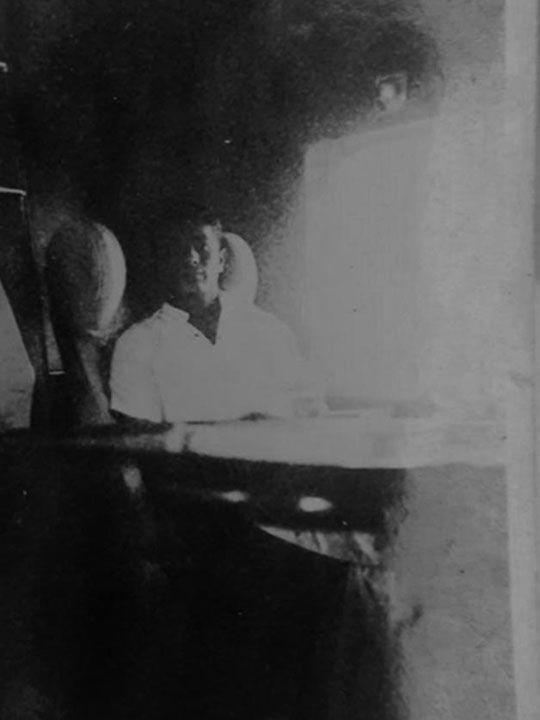
Image Credit: Bhatia family
Deepak says Uttamchand and His Highness Sheikh Rashid remained forever friends. “My father would talk about Uttra’s visits to His Highness. His last visit to meet Sheikh Rashid was on May 16, 1986, ahead of his travel to India. After sitting with him for a long time, Uttra asked to take his leave, but apparently His Highness held his hand and pulled him back. It was a very emotional moment. Two days later, my grandfather flew to Bombay and died of a stroke on his arrival at the airport,” he recalls. “My grandfather also shared very close relations with all the four sons of His Highness Sheikh Rashid and by the grace of God, we continue to carry the same legacy ahead,” Deepak adds.
Cherished relationships in high places
The Bhatias’ connections in high places are deep-rooted as is evident from what some prominent Emirati leaders and officials have to say even today.
Sheikh Ahmed: My earliest memories of Uttra go back to when I was eight or 10 years old
In a special message on the occasion of the 100 year milestone of the family, Sheikh Ahmed bin Saeed Al Maktoum, chairman – Dubai Airports, chairman and CEO, Emirates Group and President, Dubai Civil Aviation, says, “My earliest memories of Uttra and his family go back to when I was perhaps eight or 10 years old, when I spent time with the family at our farm on some weekends.”
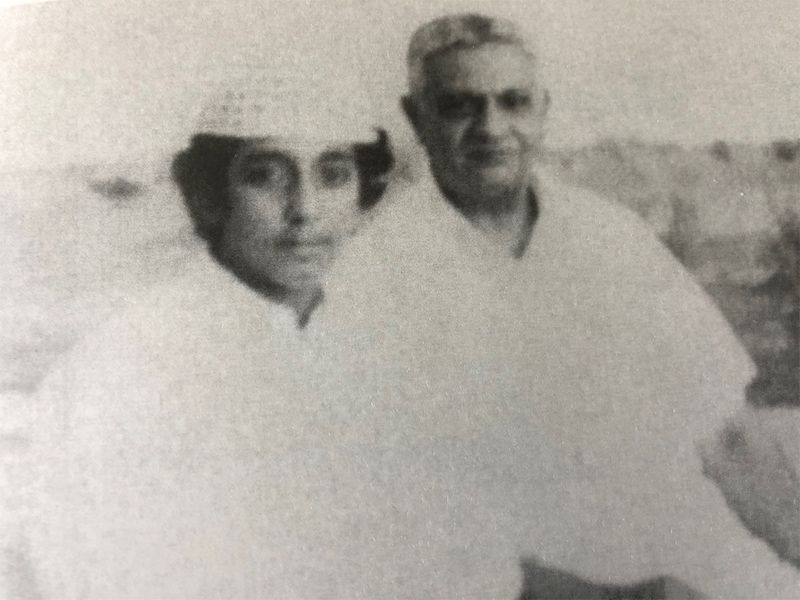
Image Credit: Bhatia family
“Later on, I would meet Deepak and the family during festive occasions and we kept the cordial ties. The Bhatias are friendly, industrious and humble people, who have made many contributions to the community in Dubai. I’m glad to see the family continue to prosper and now into their 4th generation in Dubai,” says Sheikh Ahmed.
Hala Badri: We collectively share an inseparable bond
Hala Badri, Director General of Dubai Arts and Culture Authority, said: “The Bhatia family is an embodiment of the foundational values of openness and acceptance that Dubai has always exemplified, even before the formation of the UAE. Uttamchand Bhatia’s contribution to Dubai’s economic and trade landscape is apparent, but this family has played a significant role in the cultural landscape of the emirate.
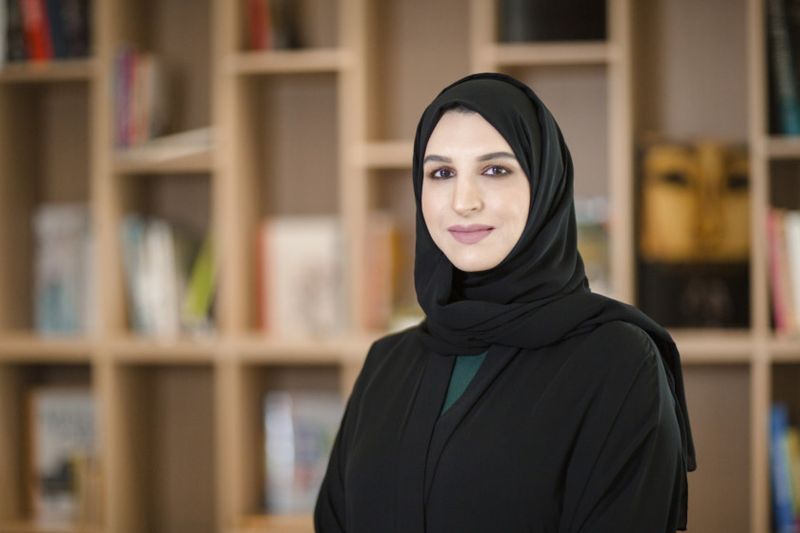
Image Credit: Supplied
“The family’s ancestral house in Al Shindagah has stood witness to Dubai’s development and serves as an important piece of history in our present. The royal family of the emirate and other Emirati families, including mine, have known the Bhatias for four generations, and we collectively share this inseparable bond that defines our relationship with them. 100 years is a milestone to be celebrated, and I hope the Bhatia family continues to inspire and make meaningful contributions to the UAE like they always have.”
Mirza Al Sayegh: I hold many sweet memories
Mirza Al Sayegh, Director of the Office of His Highness Sheikh Hamdan Bin Rashid Al Maktoum, Deputy Ruler of Dubai and Minister of Finance, told Gulf News, “When we talk of one family, we talk of a nation. I hold many sweet memories of the early Indian community in Dubai.”
Taking several names, including the “doyen Uttra”, he said, “In the UAE, we don’t regard Indians as foreigners, especially among the elderly. This relationship is one of friendship, neighbourhood, trade connections and deep trust. This is still there today.”
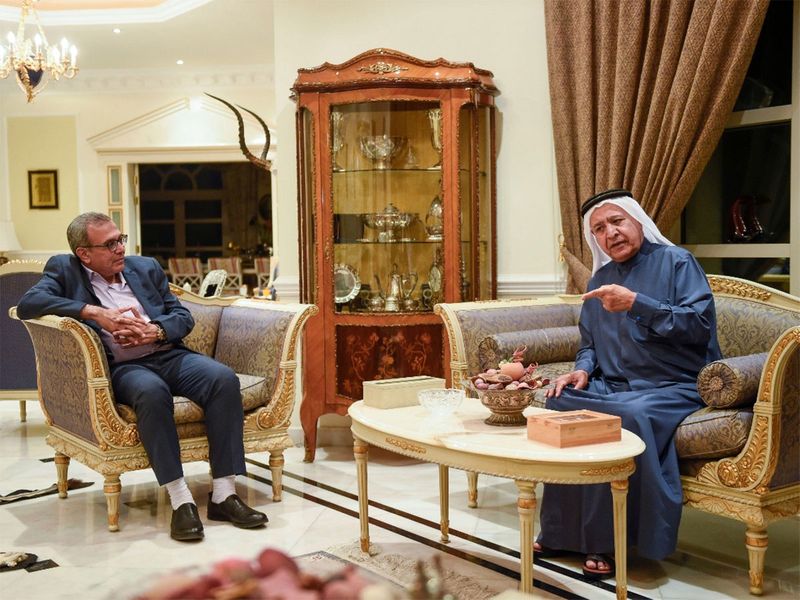
Image Credit: Ahmed Ramzan/Gulf News
He says he takes his grandchildren to the old Baanyaan Souk and recollects how early traders, many of them from India, would trade in pearls worth millions in those narrow lanes and bylanes.
He also speaks of the Al Ahlia School which his father, who learnt English, Farsi and Urdu in Bombay, founded back in time.
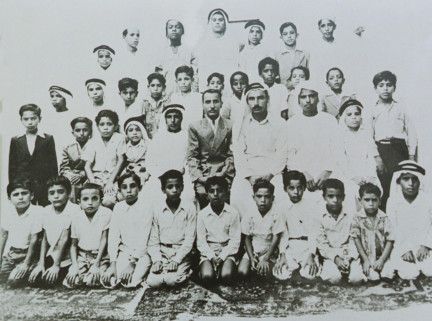
Image Credit: Pearls of Dubai (Mirza Al Sayegh)
“Many of our leaders studied in this school. Some traders from the time also sent their children here.”
Ali Bujsaim: Uttra was a wise and trustworthy man; he spoke Arabic like the Bedouins
Ali Bujsaim, former deputy director of immigration and celebrated Emirati football referee, also has fond memories of growing up with the family.
“My father was a close friend of Uttra and as a child, I remember going with him and spending time at Uttra’s shop on the way back from Sheikh Rashid’s majlis. We would also buy textiles from him.”
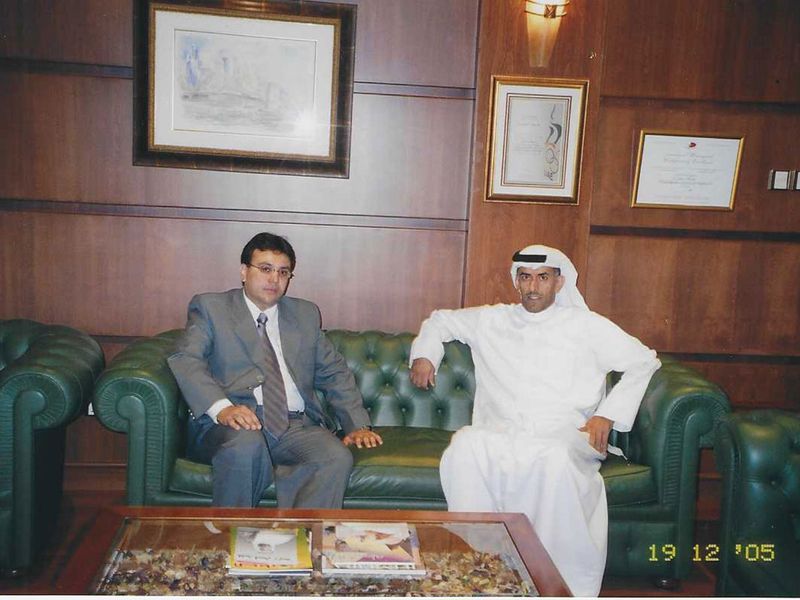
Image Credit: Bhatia family
He says he vividly remembered Uttra’s face and demeanour. “He was a wise and trustworthy man. He spoke Arabic like the Bedouins. His accent was distinctly local.”
Talking about his family’s dairy business in Shindagah in the early days, he recalls how the Bhatia family would buy milk from them. “Our house had lots of cows. They would buy milk from us both in the morning and evening.”
He says the interactions between the families were on a daily basis. “We would also join in each other’s celebrations.”
Pearls of Dubai
Back in 2001, when the idea of a book to document their momentous journey was was suggested to the Bhatias, Vijay and Deepak Bhatia characteristically shied away from it. On second thoughts, however, they decided to go ahead with project, but not as an individual family history.
“We wanted to portray the evolution of the Indian presence in Dubai through the personal experiences of not just our family, but also others who had landed here before 1958 – the year that Sheikh Saeed Bin Maktoum Al Maktoum passed on. The attempt was to depict the solid Indo-Arab relations between 1900 and 1958,” says Deepak.
The book was officially launched in February 2009 by Sheikh Ahmed bin Saeed Al Maktoum .
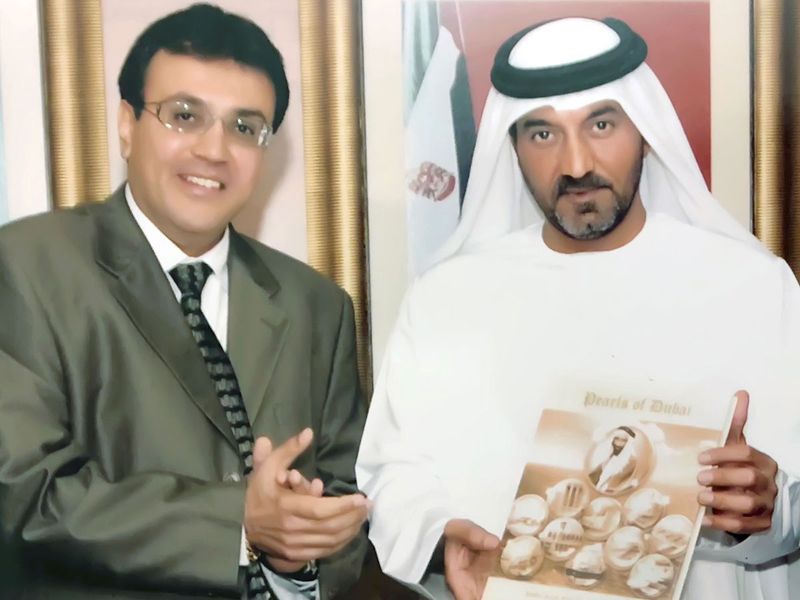
Image Credit: Bhatia family
Packed with rare personal pictures and those provided by the early settlers, the book also draws from the archives of DTCM, Dubai Civil Aviation and other entities. They depict rare moments shared with the Royalty as well as the Dubai of yesteryears.
Prominent leaders and other Emiratis feature in the book, each of their observations reflecting the close ties that the Arabs and Indians shared over the years.
His Highness Sheikh Hamdan Bin Rashid Al Maktoum, UAE Minister of Finance and Deputy Ruler of Dubai, wrote in the Foreward of the book: “We will always remember the pioneering Indian traders who lived in Dubai and forged lasting relationships with our local community. With the population being so much smaller at that time, many close bonds were made that still continue today.”
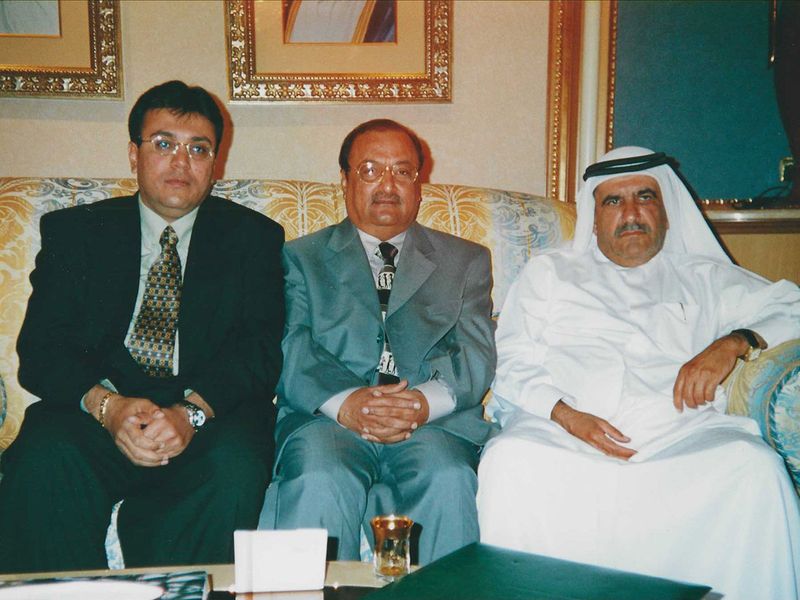
Image Credit: Bhatia family
Sheikh Ahmed Bin Saeed Al Maktoum, Chairman & CEO of Emirates Airlines, also writes: “We in Dubai remember when we were young how the Creek bustled with life as dhows sailed in from India and other countries in Asia and Africa and jostled on the wharfs with pearl-fishing dhows. Our communities also lived closely together around the mouth of the Creek, forging a tight bond that is evident even today. Today, the Indian community still plays a vital role in the economy of Dubai, throughout all our industry and services, and in supplying essential manpower. The people of Dubai value their contribution to the development of our city.”
Other noted Emiratis who reflect on Indo-Arab relations in the book include Nasser Abdullah Hussain Lootah, Essa Saleh Al Gurg, Abdullah Bin Jasim Al Mutairi, Lt. Gen. Dhahi Khalfan Tamim, Ismail Abdulla Al Gargawi and Sharafuddin Al Sayed M.H. Sharaf.
Among the Indian traders who walk down memory lane in the book are Narayandas Narsingdas, Maghanmal Jethanand Pancholia, Mahendra TrivediJaiprakash Valabdas, Deepak M. Palija, Murji Manghnani, Lakho Radhakishndas Lulla, G.B. Choithram Jethwani, Umrao Singh, Vashu Shroff, Kishinchand Naraindas Adnani, Mohan Jashanmal, Narain R. Sawlani, Harish M Bhatia and Ram Buxani.
Bhatia household and family values
Away from the demands of his high-profile work life, Uttamchand Bhatia was very much a family man. He and his wife Savitri Devi had three sons – Paramanand, Ashok, Vijay and four daughters – Tara, Chandra, Surya and Sarla – all of whom were raised with down-to-earth values. Friends in high places meant sharing weekends with their families, playing together with peers and enjoying a privileged bonhomie, but the children were taught never to cross the line.
The seven siblings studied in India and came here on visits during their school days. It was only later that they moved to the UAE.

Image Credit: Vijith Pullikal/Gulf News
“For a long time, the Bhatias were a joint family with my grandfather’s conservative and no-nonsense outlook setting the tone for us. The children were not allowed to watch movies as he considered them a bad influence. When my father Vijay forayed into film distribution much later, it made my grandfather very upset. But he eventually gave in,” says Deepak, who recalls the shift, following which he would go to the cinema and sit in the box with the family to watch movies.
Uttamchand also believed that his sons should go through the grind of a regular job before they joined his business as it would make them more disciplined.
Paramanand (1936 –2007), the eldest son who first came to Dubai on a sea plane with his mother in 1942, moved to Burami in Al Ain in 1963. He worked in a bank. “He got very close to His Highness Sheikh Khalifa Bin Zayed Al Nahyan, President of UAE, who nicknamed him Pamu. His wife was also close to His Highness’ mother,” says Deepak.

Image Credit: Bhatia family
Uttamchand’s second son Ashok (1941 –2013), a graduate from Bombay, who came to Dubai in 1964, also got a job in Abu Dhabi and worked there for five years before joining the family business of textiles. “He died in 2013, leaving behind his wife, three children and five grandchildren. My father Vijay too worked in the same place in Abu Dhabi and then joined my grandfather.”
Deepak also talks about how one of his aunts, Tara, was born on a ship named Ekma when his grandmother was travelling from Karachi to Bombay in 1947. “She is now a widow based in the US and has three children and three grandchildren. The second aunt, Chandra (1949-2017), who also had three children, moved to the US much earlier. She passed away in Dubai and her husband now lives with one of the three children in the US. While Surya was born in 1950, Sarla arrived a year later. Both housewives with two and three children each, they live with their husbands and families now.”
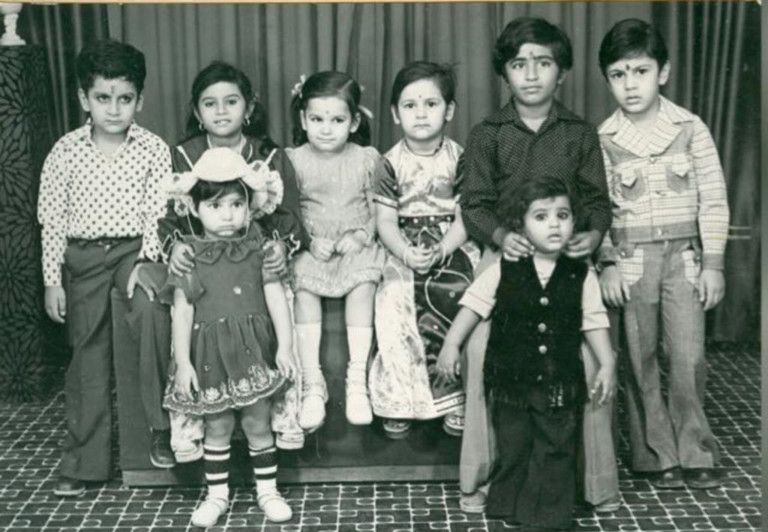
Image Credit: Bhatia family
Deepak himself, who is the eldest of Vijay’s three children, unabashedly says, “I was a Daddy’s boy. My two sisters Jyoti and Sandhya were quiet and I was the naughty one. There was nothing that my father would refuse me but I wasn’t spared either if I tried to be unreasonable. A very genial and jolly personality, my father taught me how to mix with people. He would accompany my granddad to the palaces and knew how to conduct himself. Till he died in May 2020, he shared a special friendship with some very prominent Emirati leaders in Dubai.”
Deepak, who did his schooling at the Indian High School, remembers his kindergarten days at the old building opposite Dubai Museum. He went to do his higher studies in India and then was back in Dubai to join his father’s business. “I too did a job away from the business for a few years,” he says.
Married to Anju, a fellow Indian High School student, Deepak has one son, Yash who was born in 1995 and is in the family business too. Holding the key to the family’s future, Yash says carrying his great grandfather’s legacy forward is a huge ask.

Image Credit: Ahmed Ramzan/Gulf News
“It’s a proud moment to be celebrating 100 years of the family in Dubai. It’s an emotional moment too,” he notes.
Bhatias and their community reach
While Uttraba may have earned himself the distinction of being one of the most prominent and influential Indian traders, he also commanded respect for the ready help he extended to the community.
As an alumni of the Indian High School, Deepak talks of how his grandfather played a key role in the evolution of the school premises. “Back in the day, he was instrumental in getting an empty house opposite the Dubai Museum to run the first Indian school Bharath Vidyalaya, which was managed by Hemkalaben Bhatia, a teacher from Nagar Thatta. Initially, the school had classes from nursery to Grade 1.
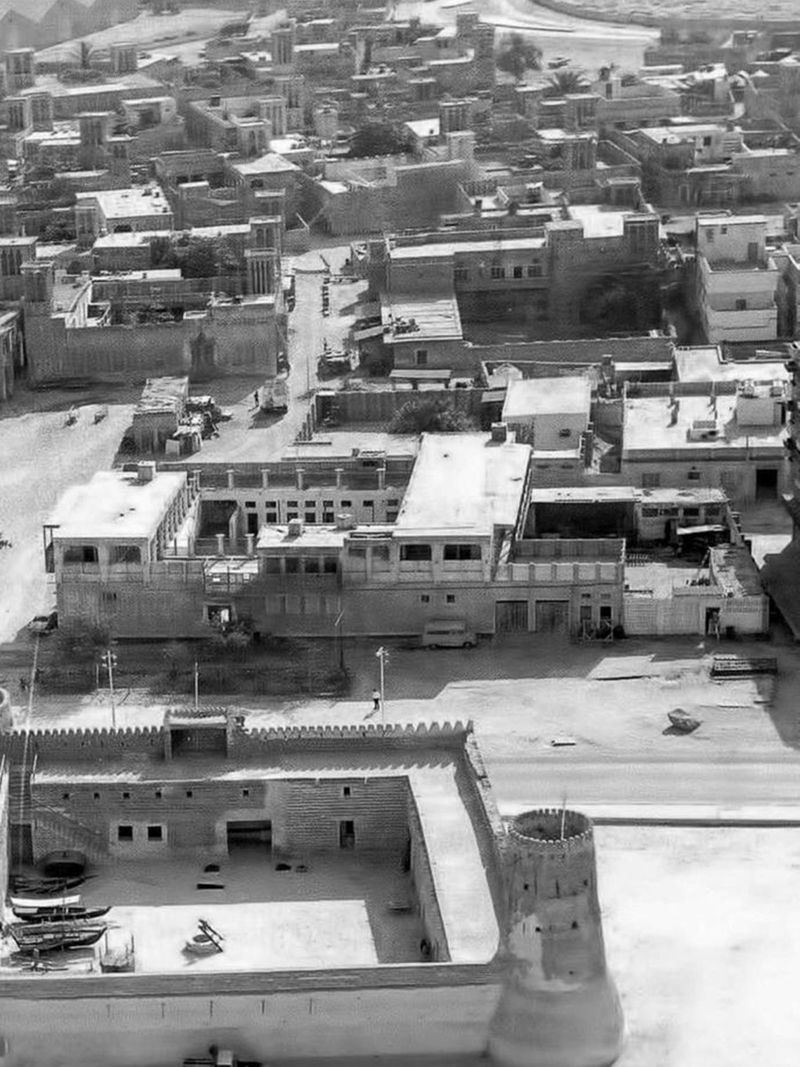
Image Credit: Bhatia family
“Even later, when the school went on to become the Indian High School, my grandfather used his good offices to get the current piece of land on which the school stands in Oud Metha from His Highness Sheikh Rashid. My grandfather would tell us how he visited the site – a desert stretch really in the 1960s – along with a Guajarti architect Moda who had been instructed by His Highness to take measurements
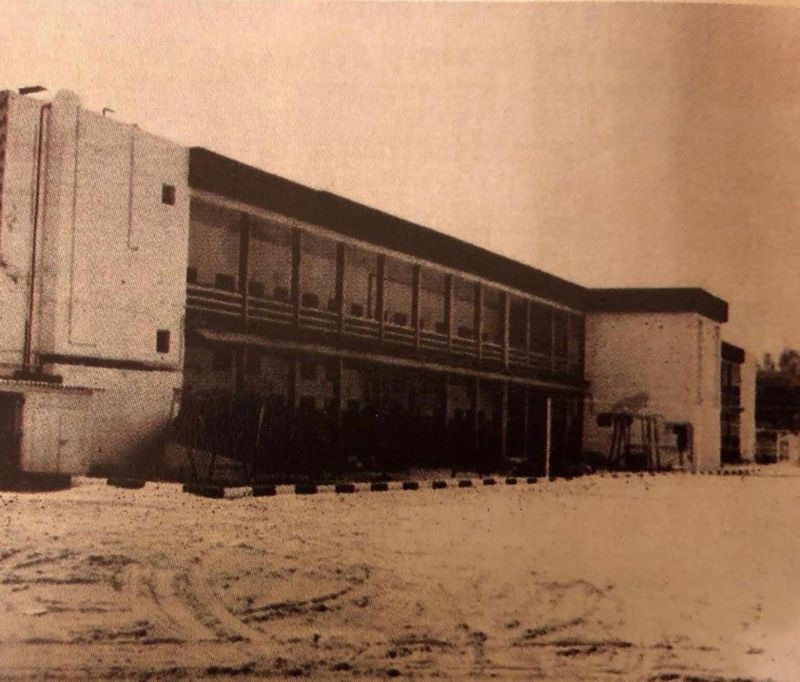
Image Credit: Bhatia family
“Construction had to be done in record time – the first building was grey in colour and as kids, we would find the place so huge. A part of the land was a reserved area. That is where India Club is now housed. Again, my grandfather played a role is getting this piece of land earmarked by HH.”
Temple and other tales
The Bhatia family also has a close association with the Krishna temple in Bur Dubai. “Back in 1936, this place was just a godown for textiles. The space in front was used as a cow shed. A well was also dug to procure water. It was again His Highness Sheikh Rashid who granted a piece of land for the community to pray in 1962. The Thattai Community Centre and a temple were promptly built,” says Deepak.

Image Credit: Bhatia family
He also recalls how his grandfather managed to get a tailor open his shop in the middle of the night to create a flag of India from coloured strips of cloth, just so that he could raise it with pride on his house and shop to celebrate India’s independence in 1947. “Of course, he took prior permission to do it,” he adds.
Although Uttra had studied only ‘four books” or till Grade 4, he was eminently schooled by the lessons of life and valued education for the future generations.
His great grandson son Yash says, “I was always fascinated by the stories that my great grandmother would tell us. She was a woman with a heart of gold.
“Although I did not see my great grandfather Uttra, I keep hearing about his deeds not only from my family members, but also elders in the community (both local and Indian). They talk not only about how successful he was, but also his honesty and trustworthiness. For someone to be remembered for these values even after all these years is a very big thing. It’s a precedent that has set a tall order for the family, something I deeply cherish on our 100th anniversary.”
The second segment of the two-part report will be published tomorrow.
Like Our Facebook Page For Latest News